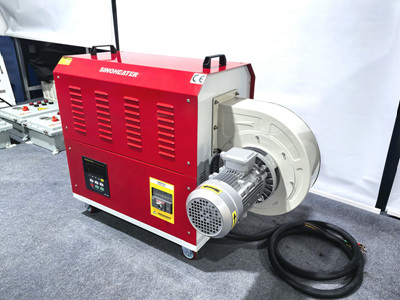Why Product Manual Detail Matters When Buying a Heat Blower
When investing in a heat blower, the product manual is often overlooked, but its detail level directly impacts usability, safety, and longevity. A well-structured manual provides clarity on technical specifications, operational guidelines, and maintenance requirements, helping users avoid common pitfalls. Below, we explore key aspects to prioritize.
1. Technical Specifications Clarity
A comprehensive manual should clearly outline critical technical details. For instance, power consumption metrics (e.g., wattage, voltage) help users determine if the device aligns with their electrical setup. Without this, improper voltage use could damage the unit or pose safety risks.
Airflow capacity and temperature ranges are equally vital. Users need to know if the heat blower can handle large spaces or specific heating demands. Ambiguous descriptions like “high power” or “efficient heating” without numerical values leave buyers guessing, increasing the likelihood of mismatched purchases.
2. Safety Guidelines and Precautions
Safety instructions are non-negotiable. A detailed manual must highlight risks such as overheating, electrical faults, or improper placement. For example, it should specify minimum clearance distances from walls or flammable materials to prevent fire hazards.
Ventilation requirements are another critical area. Some heat blowers need unobstructed airflow to function safely, while others may include built-in safety features like automatic shutoff. Users relying on vague warnings like “use with caution” may inadvertently misuse the device, leading to accidents.
3. Maintenance and Troubleshooting Support
Regular maintenance extends a heat blower’s lifespan, but users need guidance. A thorough manual should explain how to clean filters, inspect heating elements, and lubricate moving parts. Neglecting these steps could reduce efficiency or cause breakdowns.
Troubleshooting sections are equally important. Step-by-step solutions for common issues—like strange noises, uneven heating, or error codes—empower users to resolve problems without contacting support. Manuals lacking this detail force buyers to rely on trial-and-error, risking further damage.
4. Operational Instructions for Diverse Use Cases
Heat blowers serve varied purposes, from drying construction materials to warming workshops. A manual should address these scenarios with tailored instructions. For instance, drying applications might require specific temperature settings or airflow directions to avoid material damage.
Energy-saving modes or programmable timers are common features, but their benefits are lost if users don’t understand how to activate them. Clear, scenario-based guidance ensures the device operates optimally, reducing energy waste and costs.
Final Considerations
A heat blower’s manual is more than a pamphlet—it’s a roadmap for safe, efficient use. Prioritize products with manuals that break down technical jargon, emphasize safety, and offer actionable maintenance and troubleshooting steps. By focusing on these elements, buyers can avoid frustration and ensure their investment delivers reliable performance.



